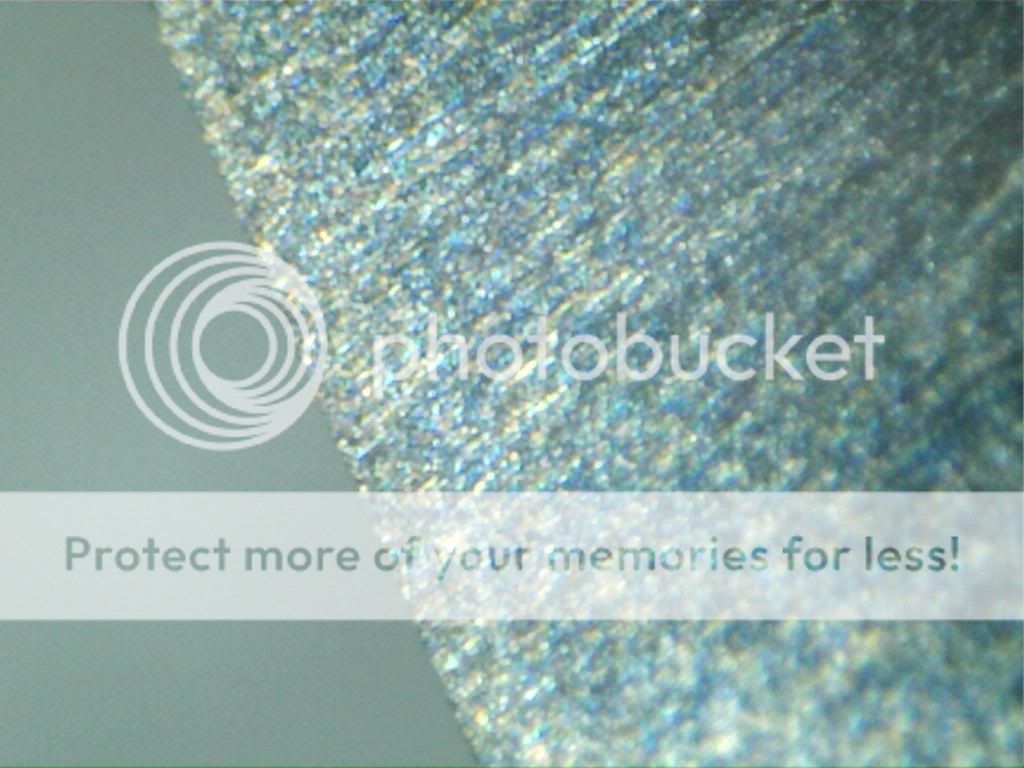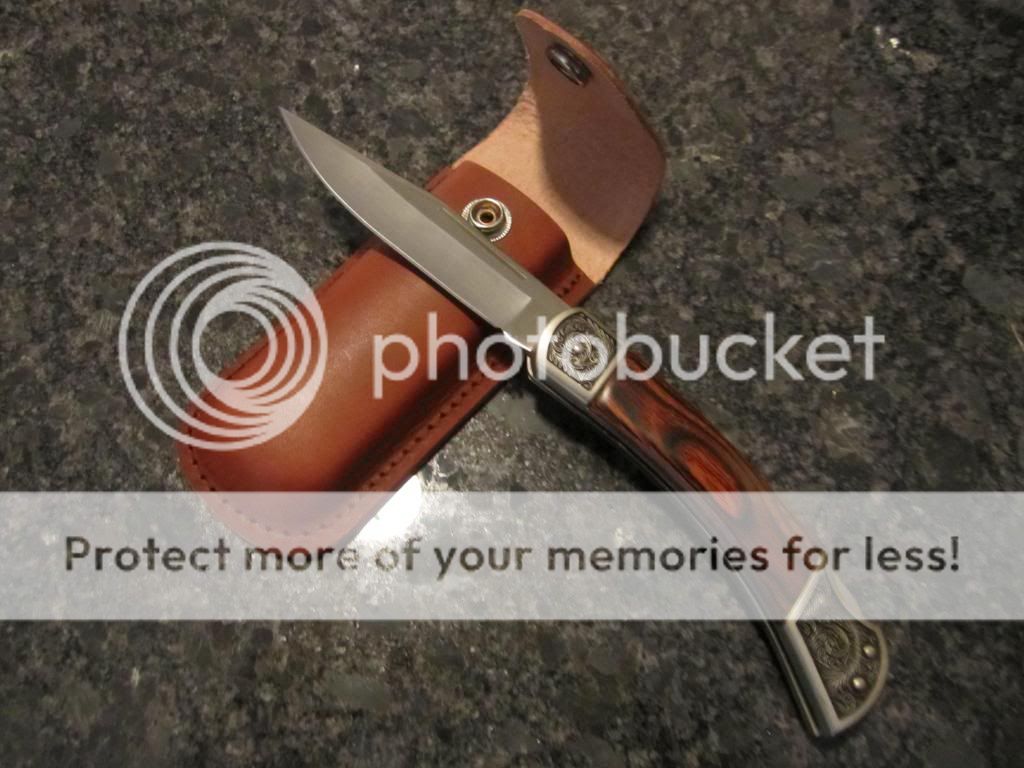Everything's hand-held, and essentially blade-to-hone, perhaps with some qualification
*. I hold the hone between my thumb at one end, and middle & ring finger at the other, with my index finger curled underneath it to support it (the 'middle' segment of my index finger, between the two knuckles, acts like a brace underneath the hone). In my knife hand, I hold the handle of the knife very much like the grip on a golf club, with my ring & pinky finger providing most of the support at the rear of the handle, with the rear bolster/cap firmly rooted in the crease of my palm directly underneath the base of the pinky finger. The middle finger of the knife hand has minimal influence on the grip; sometimes I'll even keep it extended away from the handle, as I've noticed it sometimes tends to exert too much 'twist' on the hold, and this tends to make the held angle widen up a bit. I place the tip/pad of my index finger on the side of the blade, very close behind the edge bevel nearest to the edge portion being worked. Using a back/forth or scrubbing/circular motion (while setting bevels), I'll work specific sections of the blade at a time, moving the placement of my index finger as I progress out toward the belly and tip of the blade. After I've set the bevels, I'll use a more typical sweeping/linear stroke (edge-leading) from heel to tip, to set the orientation of the grind lines on the bevels. My grip on the hone and knife remain essentially the same as before, while doing this.
* = The 'qualification' I mentioned above relates to how I sometimes, but not always, use a scrubbing motion with
both the blade and hone, sort of moving or turning opposite to one another. I sometimes fall into this out of habit, but not necessarily deliberately. Since I alternate hands when sharpening each side of the blade (I keep the edge facing to me), I've noticed I tend to 'scrub' more with both hands simultaneously, when holding the blade in my left (non-dominant) hand, and the hone in my right hand. If done the other way, with blade in my dominant (right) hand and hone in my left, I do a better job at keeping the hone a little more steady, while scrubbing only with the blade hand. All of this is just a quirk of mine, and I've gotten somewhat better at duplicating the motion used either way, but I still notice I'm doing it occasionally, more so if I'm getting a bit tired and unfocused.

All of this has taken time to get accustomed to. I first started 'sharpening' my knives (coughing; using the term loosely) on a Spyderco DoubleStuff hone, and the above-described technique grew out of how I started using that one. It's all based on my earliest habits, and has taken some time to train my hands to it; especially now that I've been alternating hands, doing it from both sides.
I might start to experiment a little bit, with using the credit card hone placed on a hard & stable surface. But because it's so small, it's often more challenging to keep it from slipping/moving around on a flat surface; trying to stabilize it with my free hand tends to get too many fingers in the way of the process. When I hold the hone in my free hand as described above, only my fingertips extend above the surface of the hone, so they're less in the way. If there's a convenient way, when & where I need it, to keep the hone from slipping/sliding, then using it on a hard surface should work well enough.
David





